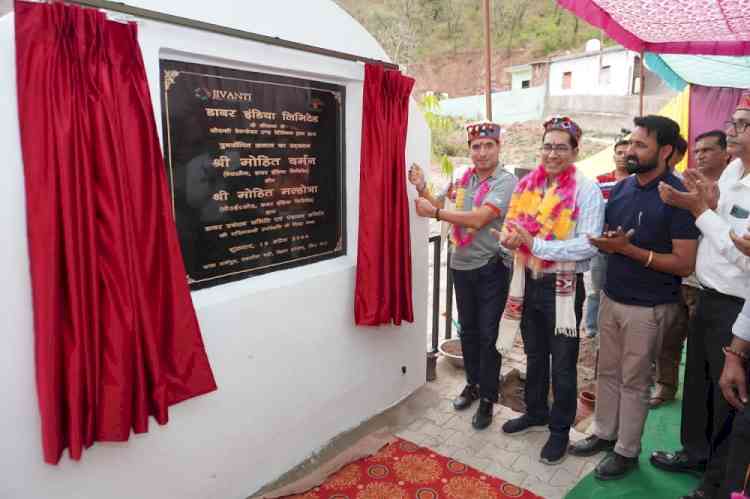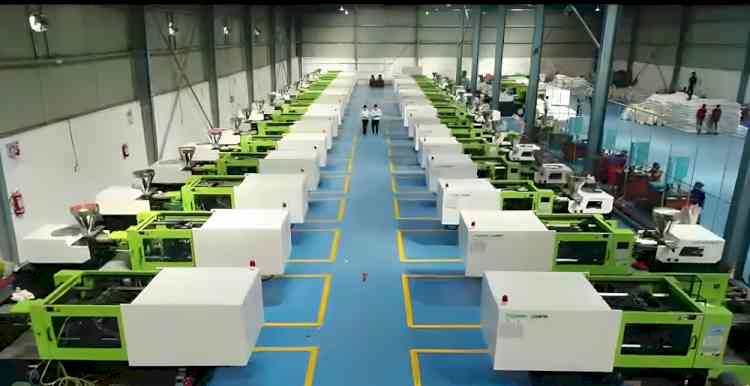CHANDIGARH's Silicon Valley effect pushes housing demand
Author(s): City Air NewsChandigarh, March 29, 2013: Chandigarh, also known as `The City Beautiful', thanks to its scenic surroundings and a central grid of gardens, each dedicated to different species of flora, is witnessing its personal...

Chandigarh, March 29, 2013: Chandigarh, also known as `The City Beautiful', thanks to its scenic surroundings and a central grid of gardens, each dedicated to different species of flora, is witnessing its personal Silicon Valley effect.
Chandigarh, often referred as 'retirement paradise', has recently seen an upswing in the number of Information Technology/ITeS/BPO professionals in the city, and this is directly pushing up demand for affordable housing in the UT.
A couple of years ago, Chandigarh's administration took it upon itself to promote the IT sector in the city, more so to build itself as an IT export hub.
Research suggests that in the fiscal year 2011-12, Rs.62 billion was the total investment in the IT sector in Chandigarh, which helped generate 67,700 direct employment in the IT sector.
This helped Chandigarh benefit Rs.48 billion in software exports and the number of indirect employment would be 3 times direct employment, as every single IT job creates 3 more indirect jobs.
However, a direct result of this large-scale employment generation programme is the massive demand in housing from this class of IT professionals.
Thanks to the housing shortage in the city, many IT professionals are now seeking accommodation in the tri-city area of Chandigarh's outskirts, Mohali and Panchkula.
"The UT has been facing shortage of houses mainly in the 1BHK and 2BHK category. As a result, the Chandigarh Housing Board (CHB), under the city administration, is said to be in the process of building large-scale housing townships to accommodate its rising local and migrant population," says Kamal Gupta, General Secretary, Property Dealers’ Association of Chandigarh.
Under this plan, CHB is said to be constructing more than 2,000 flats of different categories in Sector 63 over an area of 42 acres. Additionally, more than 4,500 dwelling units will be constructed in Sector 53, 54 and 55 in an area of 90 acres.
CITY BEAUTIFUL inspiring its neighbors
The UT's economy has been heavily dependent on agriculture and small scale industries, apart from local businesses. But over the years, there has been a significant change in the components of Chandigarh's economy, with the IT sector becoming a major player.
Chandigarh's Administration, under the overview of Department of Information Technology, set up the Society for Promotion of IT in Chandigarh (SPIC), in its bid to promote the IT industry in the UT.
Similarly, the Rajiv Gandhi Chandigarh Technology Park (RGCTP) has come to be known as the IT complex within the city, which houses the biggest names in the IT sector.
In fact, the Entrepreneur Development Centre (EDC) was another initiative by the city administration within the RGCTP.
Harijinder Kaur, ex-Mayor of Chandigarhsays the EDC was developed to augment the export of software export from Chandigarh and to aid IT professionals turning into adept entrepreneurs by providing space with plug-n-play facilities in a state-of-the-art building framework.
The EDC was conceptualised as a transit point for software export companies that intended to come RGCTP, but were awaiting the completion of construction.
The EDC is on the lines of SPIC and also houses the administrative division of the IT Department.
In fact, the SPIC is already contributing software exports worth Rs. 5 crores per year.
"Chandigarh's IT and ITeS industry - with 22% growth in turnover in 2011-12 - has outpaced main IT hubs like Bangalore, Pune, Gurgaon," says Loveleen Singh Singla, a legal professional in the city.
The RGCTP houses a host of companies including IT majors like Infosys, Tech Mahindra, Dell, IBM Daksh and Wipro, and several other small IT companies, totaling about 40 companies in all.
The IT sector provides direct employment to 30,000 people and indirect employment to 4 times the number in Chandigarh itself. In fact, one of the biggest IT companies employs about 6,000 people just in Chandigarh.
Taking note of Chandigarh's successful IT businesses, Punjab government is said to be acquiring around 600 acres to provide space for IT industry in the neighboring district of Ropar.
BOON becomes bane
However inspiring Chandigarh Administration's efforts to boost employment via the IT sector and to aid the sector maybe, the fact remains that these administrators could not possible have fathomed that success comes with its own set of problems.
These 30,000 IT professionals, plus the more than 1 lakh workers (as a result of indirect employment), are now looking for housing and the administration is clueless.
Data suggests that there are roughly 15,000 IT professionals in the RGCTP itself, and once completed (in three phases), the number of (direct) jobs within RGCTP will be a whopping 60,000. Thus, the number of indirect jobs will be roughly 2 lakh.
In fact, the neighboring town of Zirakpur is also witnessing residential apartment supply along the Ambala expressway, which connects Chandigarh to Delhi.
Professor Nirmal Datt,a renowned Chandigarh academician says, "Factors like second highest per capita income in India, lavish lifestyle, low operational costs compared to Tier I cities, high quality infrastructure, and easy accessibility from Delhi, Haryana, Himachal Pradesh and Punjab has put tremendous amount of pressure on the city's housing sector."
Datt suggests it's about time the administration accepts help from respected developers to put the process of mass housing construction on fast-track, otherwise these nearly 2 lakh private sector employees will have to seek shelter someplace else, thus driving employment out of the city.
Chandigarh's loss will be Ropar's gain.

 cityairnews
cityairnews 

















